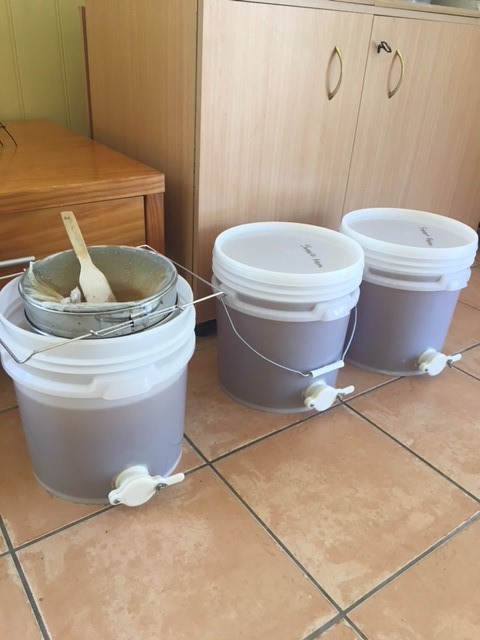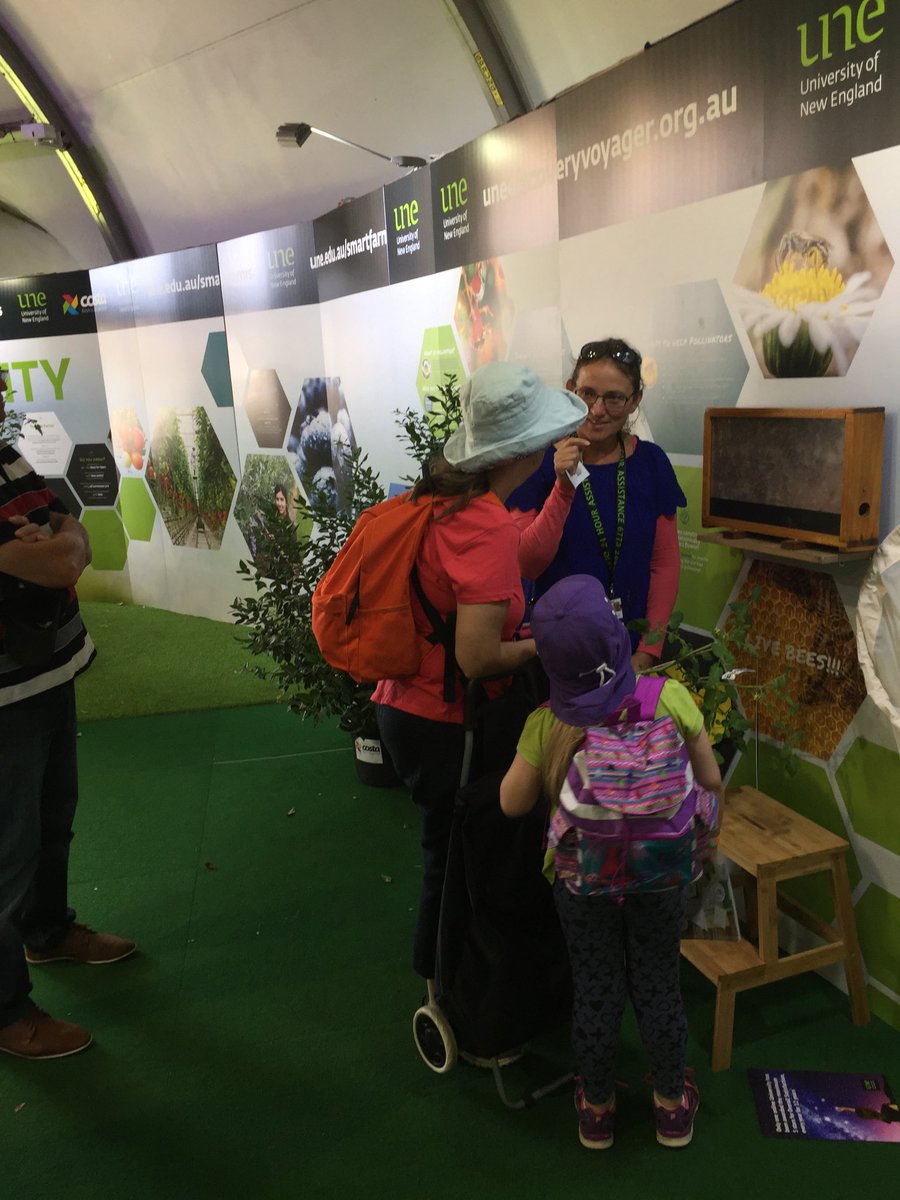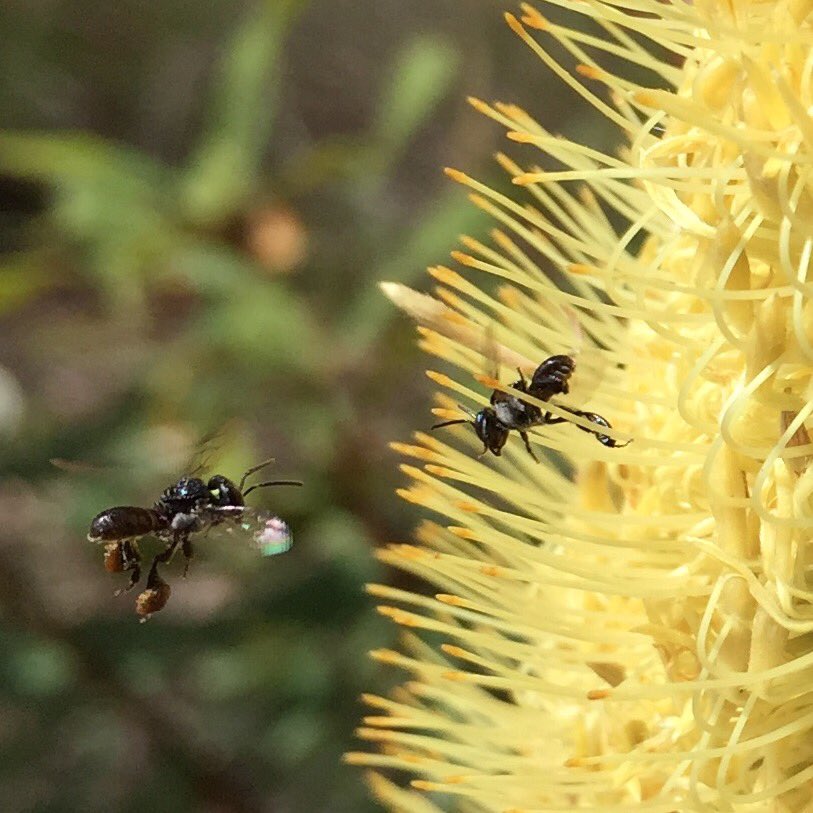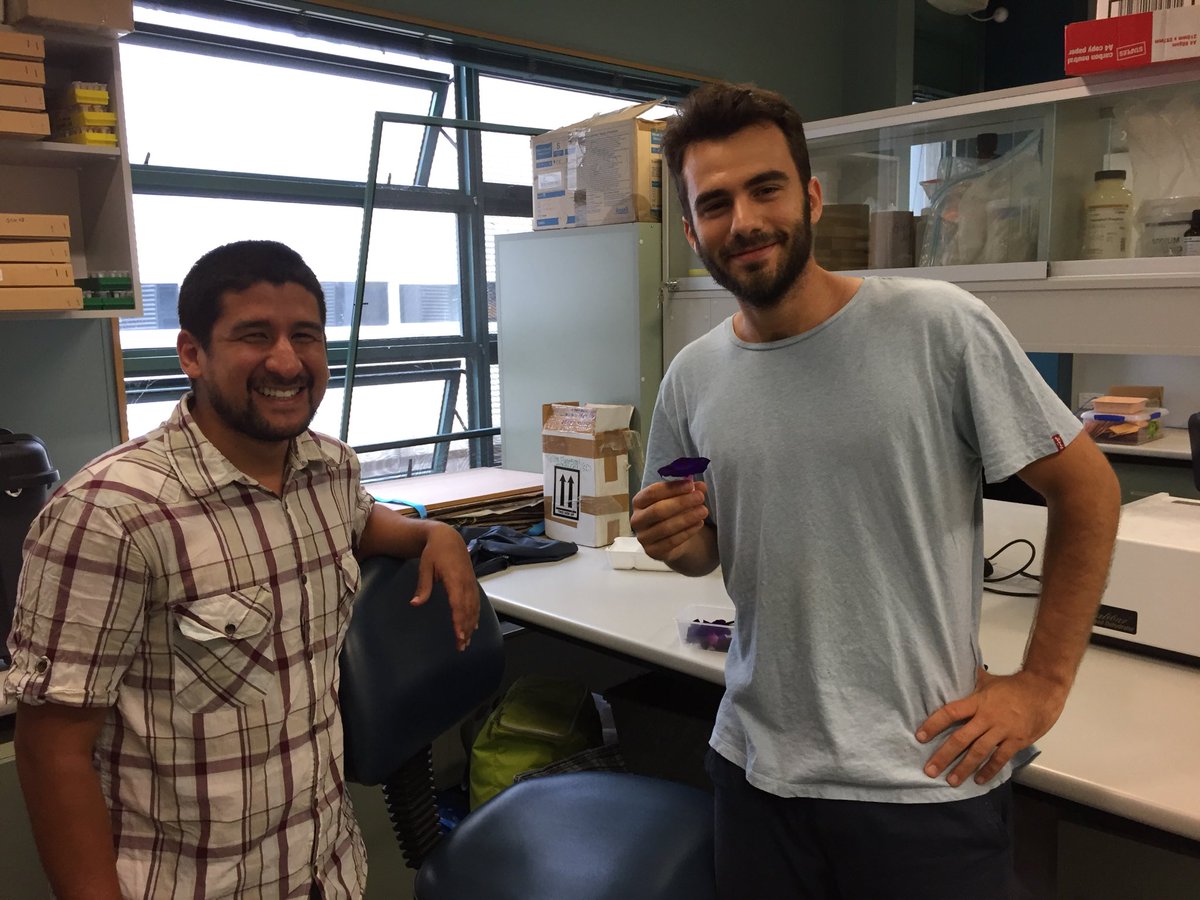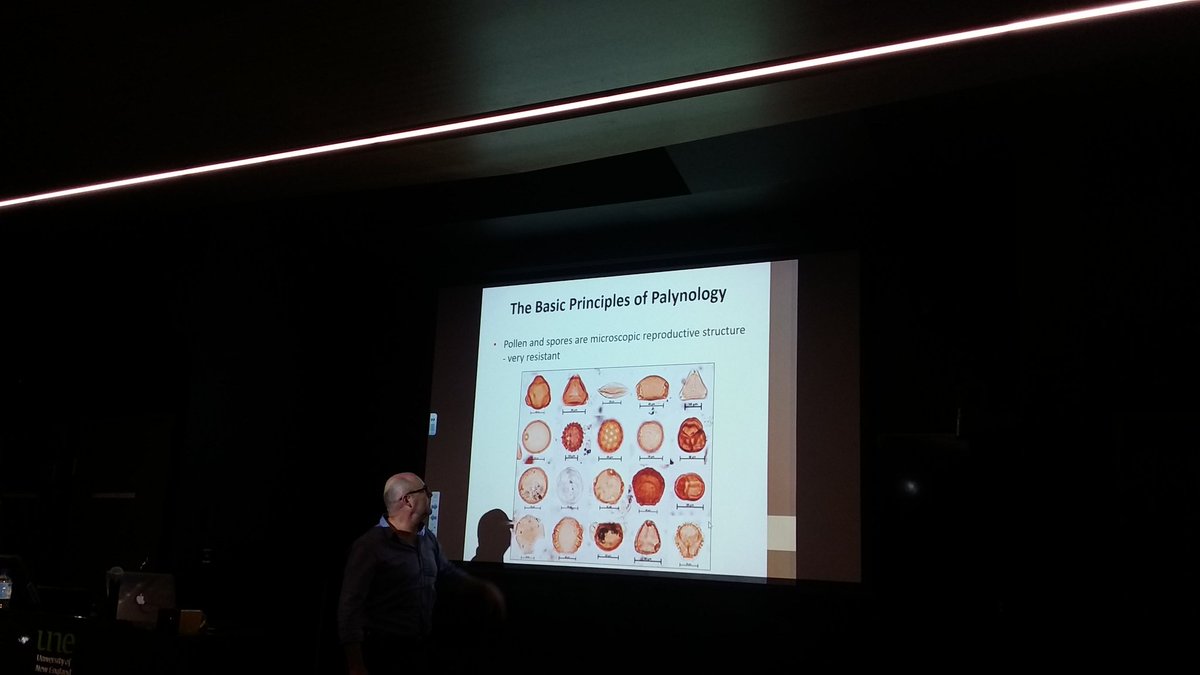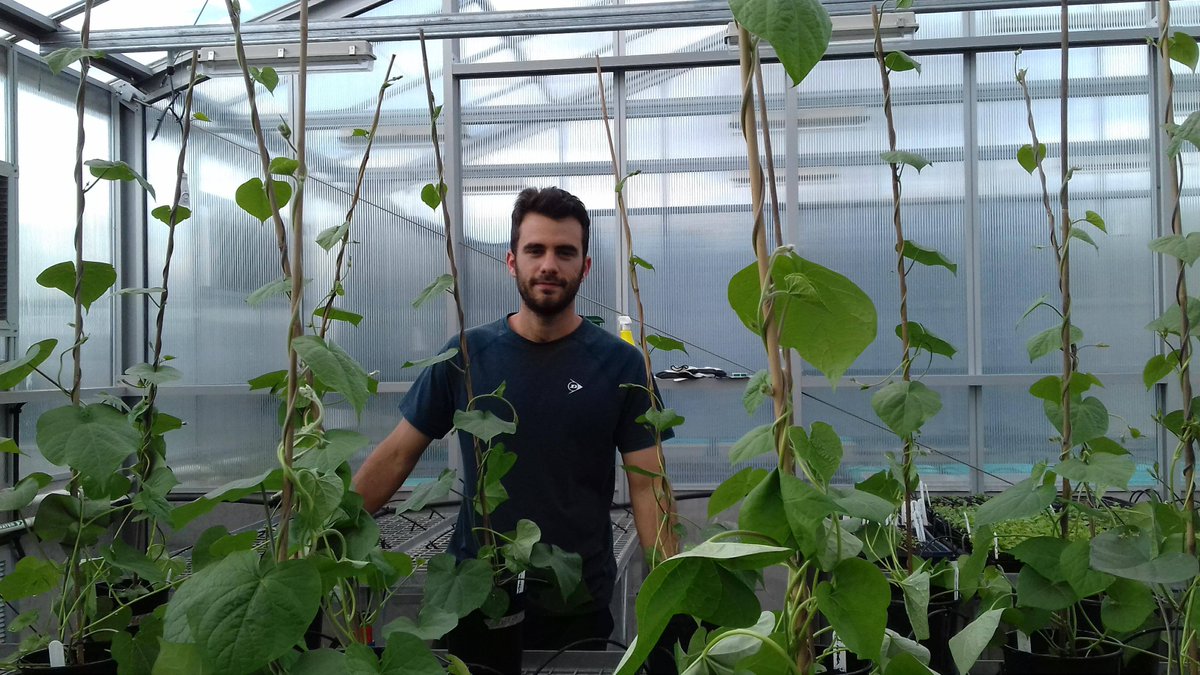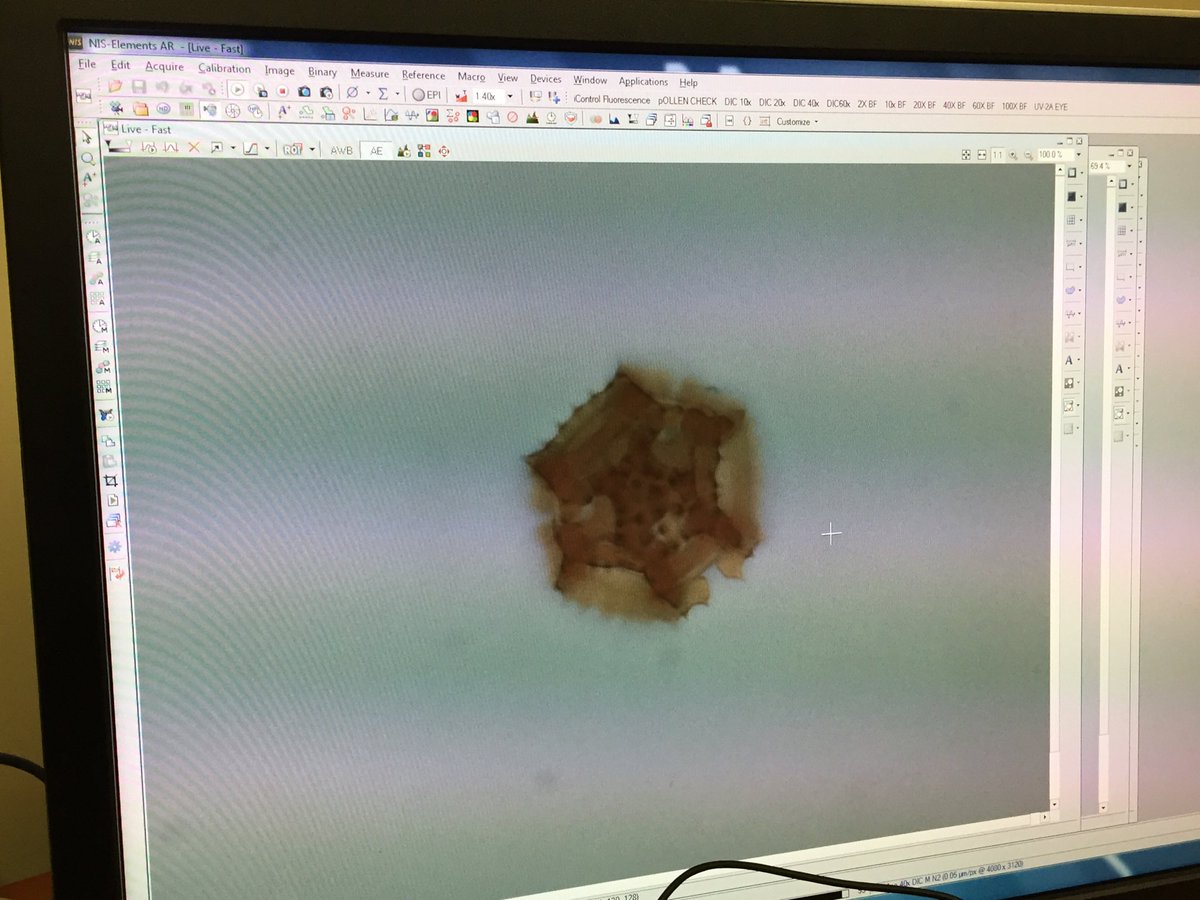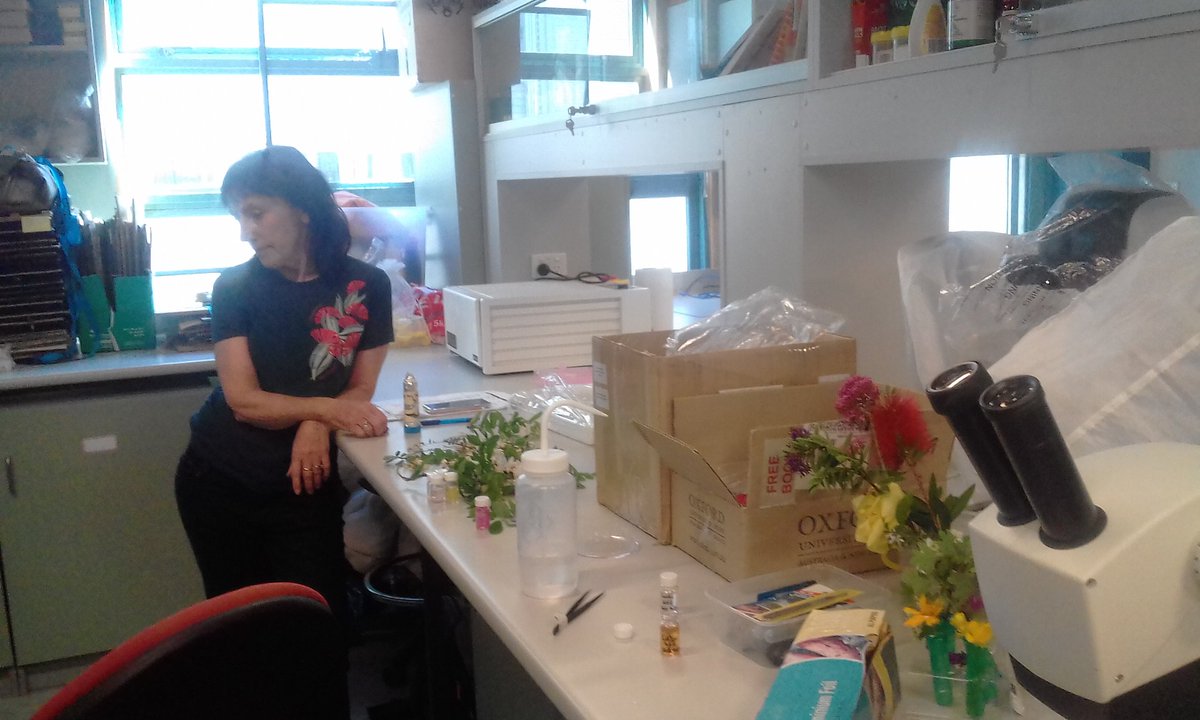We are recruiting graduate students at both the MS and PhD levels for several research projects on plant-animal interactions in natural and agricultural ecosystems. The positions are fully funded for 3 years. Our group works on many different aspects of community ecology including plant-animal interactions, insect ecology, pollination ecology, ecosystem services provided by animals, agro-ecology, threatened species ecology and the health of biodiversity and ecosystems. Research usually involves travel to field sites so candidates will need a drivers licence. Candidates will have the opportunity to shape their project towards their field of interest. More information here:
New PhD student- birds, bats or insects in flower strips
We are advertising a new PhD scholarship for students interested in the role of flower strips in attracting birds, bats and insects to blueberry farms. This PhD scholarship is open to all applicants interested in vertebrate or invertebrate taxa and the important pollination or pest control roles they play in agroecosystems. This PhD project will be based in Coffs Harbour region of Australia. See advertisement here.
We are recruiting a new PhD student!
Are you interested in working with us Manu Saunders and I on a new PhD student project related to crop pollination?
We have another PhD scholarship available for candidates interested in studying wild fly pollinators in agroecosystems!
Open to both international and domestic candidates!
See advertisement here - Closing date November 28 2019
Pollinator survey at Kosciuszko national park
An alpine summer pollinator survey was done at Kosciuszcko National park. We collect pollen from insect pollinators, data for abundance and pollinator effectiveness. Thanks to the tremendous effort of Emma Goodwin and Greg Bible.
Photography courtesy of Juan Lobaton
New PhD scholarship opportunity on pollinators and wildflowers !!! Closes 15 Feb 2019
The Rader lab, in collaboration with the Mayfield lab, is offering a unique and exciting opportunity for a motivated, independent and adventurous PhD candidate to study pollination networks in wildflower communities in the floristically diverse york gum woodlands of Western Australia - check out our Opportunities page for more details!!! https://www.raderlab.com/opportunities/
Apple pollination 2018
Bryony's paper accepted in Peer J!!!
Robert McDougall paper accepted!
Robert just got his paper accepted in PNAS "Small scale urban agriculture results in high yields but requires judicious management of inputs to achieve sustainability" Well done Robert!!!
link available as soon as it is available online!
Liam Kendall paper accepted!
Liam just got his paper accepted this morning! "Pollinator size and its consequences: Robust estimates of body size in pollinating insects" for publication in Ecology and Evolution. Well done Liam! The link to online published version will be here soon……
Jose Barragan has created a video about his PhD research!
Take a look at the cool video created by Jose Barragan about his experiences conducting a glasshouse pollination trial for the first chapter of his PhD thesis! Excellent job Jose!
https://www.youtube.com/watch?time_continue=40&v=JO9tRUM76y8
Bumblebees are frequent flyers - what are the impacts?
Romina, Manu and Toby wrote a blog post for Journal of Applied Ecology on a recent paper published in the journal about introducing bumble bees to new regions for crop pollination.
Read the post here:
Addressing pollinator introduction policy and the effects introduced species can have on local ecosystems, Romina Rader, Manu Saunders and Tobias Smith discuss the recent Policy Direction, Coordinated species importation policies are needed to reduce serious invasions globally: The case of alien bumblebees in South America by Aizen et al.
The Importance of Surveying Pollinators Across Various Environmental Conditions
by Emma Goodwin.
Emma's honours project is co-supervised by Romina, Manu and Francisco Encinas-Viso at CSIRO. Emma spent a few weeks over summer in Kosciuszko National Park, catching pollinators and collecting data on alpine plant-pollinator networks, and is currently writing up her exciting results! This blog is co-posted over at Manu's website.
Recent plant-pollinator network studies have been concerned with the impacts that climate change may have on pollination across various ecosystems, particularly in alpine regions. Many of these studies are investigating ‘phenological mismatch’ as a significant issue that may result from climate change.
‘Phenological mismatch’ or ‘phenological asynchrony’ is used to refer to when the emergence of pollinators and flowering time of plants becomes out of sync over time. If these two processes become out of sync then it reduces the potential for flowering plants to be pollinated.
In alpine regions, climate change can result in altered timing of snowmelt which, in turn, influences the time at which the flowering plants begin to flower. There is concern that if this occurs earlier than usual, the timing may not match up with the time at which insects emerge and start feeding on and pollinating these plants (Kudo & Ida, 2013). As a consequence, this is likely to lead to declines in pollinator and plant species populations in these areas. To determine whether phenological mismatch is occurring, studies must be undertaken over a number of years to discount the normal level of annual or within seasonal variation. This is an important thing to do but is a huge investment of time and effort.
Another predicted impact of climate change is an increased frequency of extreme events such as heat waves, snowstorms, unseasonal rainfalls or droughts (Hughes, 2003). Species that are most threatened by extreme climatic events are those with limited ranges, dispersal ability or inhabit very cold areas such as the alpine zone (Scharf, Filin, Ben-Yehoshua, & Ovadia, 2009). This includes our alpine pollinators around the world. This means that it is also important for us to understand how sudden variation in environmental conditions may impact pollinators and their interactions with flowering plants.
Long term studies often use monthly or annual averages of environmental conditions, such as temperature, humidity, rainfall and wind speed. However, these averages have limited value in determining how pollinators respond to environmental conditions day to day and consequently how insects will respond to sudden variation in environmental conditions.
Environmental variables are known to have profound effects on insect behaviour. As ectotherms, insects are generally cold intolerant and tend to become more active with warmer temperatures (Arroyo, Primack, & Armesto, 1982; Rands & Whitney, 2008). Temperature changes, for example, can have a number of effects on foraging activity, thermoregulation, body size and life span of pollinators (Hoiss, Krauss, & Steffan-Dewenter, 2015). Conversely, high wind speeds and humidity levels tend to result in decreased insect activity (Arroyo et al., 1982; González et al., 2009).
As we know a reasonable amount about insect activity generally, many studies choose to not conduct flower-visitor observations in weather conditions where insects are less active. However, many of these studies are conducted with bees as the main pollinator. It is now clear that there are other insect taxa, aside from bees, that are also effective pollinators. These include other flower-visiting insects such as flies, butterflies, moths, and beetles. Some of these taxa have greater tolerance to extreme environmental conditions than others. Flies tend to be much more cold tolerant than other taxa such as bees and are often still active at lower temperatures (Kühsel & Blüthgen, 2015). Therefore, only surveying in good conditions will restrict our understanding of pollinators to those that are active during warm sunny conditions and will exclude taxa that may be present in adverse conditions.
Understandably, we are often trying to maximise the return on our sampling effort by sampling at the most optimal foraging times for taxa. Hence, many studies only survey when the temperature was within the optimal foraging activity range. However, ignoring the apparent outliers completely will limit our understanding of the thresholds of these insects.
Pollination studies considering climate change and phenological mismatching are looking at the impacts over the long term and multiple flowering seasons. Climate change however, is also having and going to continue to have immediate and short term impacts within a single flowering season through increased frequency of extreme events. By surveying in a range of conditions we can develop a greater understanding of the contributions other pollinating taxa such as flies make to pollination of our native flora and also their level of vulnerability or resilience to sudden environmental change.
References
Arroyo, M. T. K., Primack, R. B., & Armesto, J. (1982). Community studies in pollination ecology in the high temperate Andes of central Chile. I. Pollination mechanisms and altitudinal variation. American Journal of Botany, 69, 82-97.
González, A. M. M., Dalsgaard, B., Ollerton, J., Timmermann, A., Olesen, J. M., Andersen, L., & Tossas, A. G. (2009). Effects of climate on pollination networks in the West Indies. Journal of Tropical Ecology, 25(05), 493-506. doi:10.1017/s0266467409990034
Hoiss, B., Krauss, J., & Steffan-Dewenter, I. (2015). Interactive effects of elevation, species richness and extreme climatic events on plant-pollinator networks. Glob Chang Biol, 21(11), 4086-4097. doi:10.1111/gcb.12968
Hughes, L. (2003). Climate change and Australia: trends, projections and impacts. Austral Ecology, 28(4), 423-443.
Kudo, G., & Ida, T. (2013). Early onset of spring increases the phenological mismatch between plants and pollinators. Ecology, 94(10), 2311-2320. doi:doi:10.1890/12-2003.1
Kühsel, S., & Blüthgen, N. (2015). High diversity stabilizes the thermal resilience of pollinator communities in intensively managed grasslands. Nature Communications, 6, 7989. doi:10.1038/ncomms8989
Rands, S. A., & Whitney, H. M. (2008). Floral Temperature and Optimal Foraging: Is Heat a Feasible Floral Reward for Pollinators? PLOS ONE, 3(4), e2007. doi:10.1371/journal.pone.0002007
Scharf, I., Filin, I., Ben-Yehoshua, D., & Ovadia, O. (2009). Phenotypic plasticity and variation in morphological and life-history traits of antlion adults across a climatic gradient. Zoology, 112(2), 139-150. doi:https://doi.org/10.1016/j.zool.2008.05.004
News and updates: crop pollination
Liam's PhD research on using managed stingless bees for blueberry pollination was recently covered in the Australian Blueberry Grower magazine. Click here and have a look at pages 25-26. Liam is currently in Finland for the European Congress of Conservation Biology, where he is presenting his work on a new R package to analyse bee morphological traits.
Manu, Romina and Toby recently published a letter in Science "Bee conservation: key role of managed bees". The letter was in response to a previously-published opinion piece in Science and highlights the critical role that managed pollinators play in global food production (including honey bees, but also stingless bees, orchard bees, bumble bees etc.). We need managed pollinators for agriculture, but it's important to choose the 'best' one for the system and managed landscapes to also support wild pollinators that enhance fruit set too. Read more on Manu's blog.
News and updates
There's been lots happening in the Rader Lab recently!
Dan Bickel from Australian Musuem visited us at UNE late last year to teach us all the art of Diptera identification. Flies are awesome. While we were in the taxonomic mood, Toby also took the opportunity to test his new ID key for native bees with us, which we are looking forward to seeing out!
We also had a visit from Simon Haberle from ANU, who taught the lab valuable skills in pollen acetolysis and identification.
Emma has just returned from her field season in the alpine region around Mt Kosciuszko. See this previous post with some pictures of her gorgeous field sites! She is on the home stretch now, and is looking forward to getting into her data analysis and writing up the honours thesis.
Carolyn notes the Smart Farm bee hives are doing really well. So far they've produced about 100 kg of honey, which is not a huge harvest but there's lots left to keep them going over winter. All four hives have young queens and are set up well for winter although they won’t be getting much time off work because they are about to start a pollination project!
Liam has just returned from Europe. He spent some time in Spain with Rader Lab collaborator Ignasi Bartomeus, where they worked on developing an R package to help with measuring pollinator traits, like body size and foraging distance. He then met up with collaborators in Switzerland. Stay tuned for a blog post on Liam's travels coming soon.
Romina spent some time at the Royal Easter Show in Sydney promoting our crop pollination research. UNE was allocated a large section of the agricultural pavilion and produced an awesome display featuring some of the agricultural research happening here at UNE, including Rader Lab's pollination research. And congratulations to the UNE team who put it together, as the display won the Gold Award for Commercial Exhibitor in the agricultural section!
Mark has just finished up field work in berry farms near Coffs Harbour, where he designed a protocol for assessing stingless bee flower visitation rate inside polytunnels. He is now on leave to knock off the last bit of writing to finish his PhD!
Jose and Juan both received a CSIRO top-up scholarship for their PhD research projects. Congratulations!
We farewelled Charlie (from Canada) and Malou (from France) at the end of 2017, but collaborations continue and we hope to see them again soon!
New member: Greg Bible (page coming soon) has just started his honours looking at how heterospecific pollen affects seed growth.
Papers:
Willcox BK et al. (2017) Absence of small hive beetles from flowering plants. Journal of Apicultural Research, 56:643-645.
Lobaton JD et al. (2017) Resequencing of Common Bean Identifies Regions of Inter–Gene Pool Introgression and Provides Comprehensive Resources for Molecular Breeding. The Plant Genome, doi:10.3835/plantgenome2017.08.0068.
Birkhofer K et al. (including R Rader) (2018) Relationships between multiple biodiversity components and ecosystem services along a landscape complexity gradient. Biological Conservation, 218: 247-253.
Lanuza JB et al. (2018) Opposing effects of floral visitors and soil conditions on the determinants of competitive outcomes maintain species diversity in heterogeneous landscapes. Ecology Letters.
JOB ANNOUNCEMENT: SEASONAL FIELD TECHNICIAN
The Rader Lab at the University of New England, Armidale are investigating the efficiency of individual wild pollinators and the diversity of insect communities in melon fields and mango orchards in the Northern Territory and Queensland.
Four temporary field technician positions are available for approximately 3.5 months, starting around mid-May and ending around the end of August 2018. These four field technicians will use field and lab techniques to assess pollinator efficiency and diversity in watermelon fields and mango orchards in the Darwin, Katherine, and Cairns areas. The team will primarily conduct hand-netting and observations of pollinator species, focusing on native bees, butterflies, flies, and wasps. The team will also collect pollen samples from plants and insects, plant samples for identification, and weather and geographical information. See more about our research at https://www.raderlab.com/.
Applicants with un-restricted availability and an inclination for travel to all three locations will be highly considered. However, please apply even though you may be available for 1 – 2 months as our schedule is somewhat flexible. Travel to field sites, field lodging, and food will be provided during the field season. The field housing is close to major towns, where field workers can shop and enjoy a nice café on their days off. Field workers should be prepared to have limited mobile phone and internet access during field work. An internet hotspot is provided and is available at all field accommodations. Mobile phone service is generally reliable at the accommodations as well.
*Responsibilities*
- Strict adherence to biosecurity and safety procedures on large farms
- Field monitoring and collection of pollinators
- Processing insect specimens in the lab including pinning bees and labeling samples
- Preparing and slide mounting pollen samples
- Data entry into Excel spreadsheets
*Desired Qualifications*
- Ability to be trained and take instruction in field and lab settings
- Previous field or lab experience with a diverse group
- Attention to detail and willingness to take leadership of and responsibility for their work
- Highly motivated and able to work independently
- Basic computer skills (Word, Excel)
- Ability to remain upbeat and patient in hot, dry, and uncomfortable conditions
- Valid Drivers License with 4WD certification*
- Valid First Aid Training*
*Applicants will be enrolled in a 4WD and/or a First Aid course at UNE if not already certified.
*Beneficial Qualifications*
- Previous experience with pollinators, especially native bees, and/or monitoring other insect populations
- Previous field experience in agricultural areas
- Experience living in remote locations for extended periods
To Apply: As a single PDF, send a brief cover letter explaining why you are interested in this position and details of your availability, a resume, and names and contact information for two references to: Lindsey Kirkland, lkirkla6@une.edu.au. Please place “Seasonal Hire” in the subject line of the email. Review of applications will begin immediately and will continue until the positions are filled.
Summer research in the Australian Alps!
Rader Lab Honours student Emma Goodwin is spending January enjoying peak wildflower season in Kosciuszko National Park. Emma is supervised by Romina and Manu, as well as Francisco Encinas-Viso and Juanita Rodriguez from CSIRO in Canberra.
Emma is investigating pollinator networks in the Australian alpine region near Charlotte Pass, Kosciuszko National Park. The project involves insect visitor observations to explore the interactions between alpine flora and pollinators. Pollen from visitations will be sampled to look at both the quantity and diversity that specific insects are carrying. This will contribute to a greater understanding of pollination ecology of alpine Australia.
After her stint on top of Australia, Emma will return to Canberra to analyse some data with her CSIRO colleagues, and then back to UNE Armidale in March to write up her honours thesis. Stay tuned for more of her project!
Looking for pollen tubes
The Rader Lab team has spent a couple of days learning new lab techniques from Jan Grant from Plant and Food Research New Zealand. An important part of pollination research is finding out if the pollen grains transferred by different pollinators have fertilised the plant's ovaries. This is a lot trickier than it sounds! The team learned how to extract stigmas from fresh flowers, prepare microscope slides, and find the magnified pollen tubes under the lens. Practice makes perfect!
Our hives are growing!
Our honey bee hives have been growing strongly since they arrived at the UNE farm in May. The colonies have grown so much the hives are now three storeys high! They aren't producing honey yet, but the word is that brood production is going gangbusters.
PhD Opportunity
New pollination team member
This week we also welcomed another new team member, Charlie Bailey! Charlie is a Masters student from University of Regina, Saskatchewan, studying wild pollinators in sour cherry crops in Canada. She will be with the Rader Lab for a few months to explore what goes on in Australian apple orchards!






